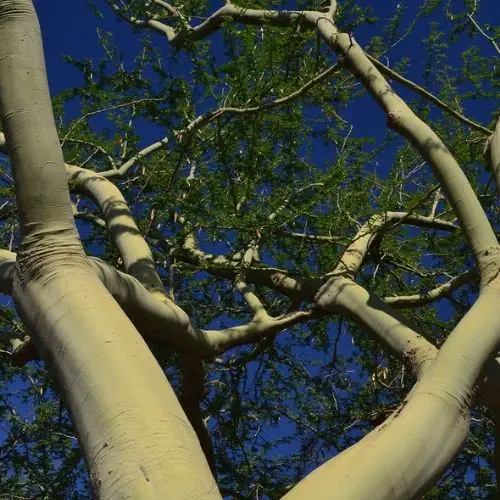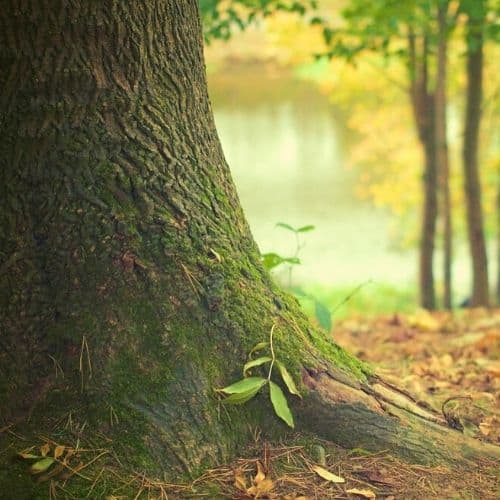
When you draw a tree, you would probably use green color for the leaves and brown color for the bark, wouldn’t you? Well, what if I told you that there are some trees which are green in all parts! That’s right; trees with green barks are referred to as ‘Palo Verde’ trees. The term ‘Palo Verde’ is Spanish for ‘green stick’, quite the appropriate name!
Most trees have green barks due to the presence of chlorophyll in them. Trees with green barks are called Palo Verde trees. There are five species of Palo Verde trees; the Blue Palo Verde, the Foothills Palo Verde, the Sonoran Palo Verde, the Mexican Palo Verde, and the Desert Museum Palo Verde
What kind of tree has a green bark?
The barks of these trees are green due to the presence of chlorophyll which is a natural green pigment. Interestingly enough, green barks have the ability to photosynthesize due to this!
Palo Verde trees are native to the desert and thus, they have several features that help them adapt to the desert climate. One of these features is their green barks which help them perform photosynthesis; a process that is generally carried out by the leaves of a plant.
As the barks of these can carry out this process, the Palo Verde trees have small leaves to reduce water loss and retain water within the tree. All Palo Verde trees have deciduous foliage and in the springtime, the trees produce yellow flowers.
There are five species of Palo Verde trees:
- The Blue Palo Verde
The Blue Palo Verde is native to southern California and is found growing near sources of water. The hue of the bark is blue-green. The Blue Palo Verde is the fastest species to bloom. They grow straight upright and have a low canopy with a wide, umbrella-shaped crown spread.
- The Foothills Palo Verde
The Foothills Palo Verde is native to southern California and generally grows on rocky slopes. The hue of the bark is yellow-green. The growth rate of the tree is slow and they are generally the shortest species of the five.
- The Mexican Palo Verde
Native to Mexico and the Southwestern United States, the Mexican Palo Verde has a rapid growth rate and is popular in subtropical climates. The Mexican Palo Verde is the most distinct-looking Palo Verde when it blooms. It has fine-textured foliage and bright yellow flowers.
- The Sonoran Palo Verde
Native to the Sonoran Desert of Arizona, the Sonoran Palo Verde growth rate is considerably fast and they can grow to be the tallest species of the five. Unlike the other Palo Verdes, the hue of the Sonoran bark is blue-green.
- The Desert Museum Palo Verde
The Desert Museum Palo Verde is a hybrid between the Blue Palo Verde, the Foothills Palo Verde, and the Mexican Palo Verde. It earned its name from the Arizona Sonoran Desert Museum where it was found. Much like its Blue Palo Verde parent, this species has a low canopy with a widespread crown.
Palo Verde trees are desert plants and their green barks help them survive in the desert climate. The bark carries out most of the photosynthesizing process. As a result, Palo Verde trees can have small leaves to cut water loss through the leaves and to survive with minimal supplemental water.
What does green tree bark mean?
If a tree naturally has a green bark, it means that there is chlorophyll present in the tree bark.
Chlorophyll is a natural pigment that gives plants and algae their green color. It is also an essential element of photosynthesis.
Chlorophyll absorbs light and the process of photosynthesis converts this stored light energy to transform carbon dioxide and water into glucose that plants use as food. This is typically done by leaves. However, green-barked trees can photosynthesize using their barks instead.
If a tree bark has green spots that are not a natural characteristic of the given species, it may be lichen. Lichen is an organism that is comprised of a fungus and green algae or cyanobacteria (photosynthetic bacteria). The fungus supplies the bark with moisture and minerals whilst the algae or bacteria photosynthesize to produce food.
Natural green on a tree bark means that the bark contains chlorophyll which gives it the green pigment we see. Formations of green substances on a tree bark may be due to lichen. It is an organism made up of fungus.
What are green spots on trees?
If you see spots of green on trees, they are usually one of three things; moss, algae, or lichens. Moss is a non-vascular plant with a thick, coarse texture that manifests as dense, green tufts on the barks and branches of trees.
Algae are organisms that contain chlorophyll and other elements needed to photosynthesize. It grows in moist weather conditions and takes on the appearance of a green, dusty powdery deposit.
Lichens are a combination between fungi and algae or cyanobacteria. They have the most distinguished look among the three and appear as circular crusty green patches.
While none of these growths are particularly harmful to trees, people may consider the green spots to be unpleasant. Thus opt to remove them to make their trees more pleasing.
Green spots on trees may either be moss, algae, or lichen. Moss is clumps of dense, green non-vascular plants that can be present throughout the wood of a tree. Algae are visible as a green dusty powder that grows in moist weather. Lichen appears in the form of circular crusty green patches. Neither moss, algae nor lichen is harmful to the tree but one may ruin its appearance.

How can green spots on trees be removed?
You may want to treat the green spots on trees to make their appearance more beautiful.
While the growths themselves are not harmful to the tree, the methods used to remove them can be if done wrong. This is why you must be very careful with the removal process. If there is a large presence of green spots on your trees, it is advisable for you to consult a professional.
Yet, if you still wish to proceed with removing it on your own, you can first try peeling the outermost layer of the bark with the growth on it. Be extra careful here, you do not want to go too deep. Be sure to wear gloves while doing this. Otherwise, you can concoct a soapy water solution and apply this to the growth. After a few applications, the green spots may begin to turn orange or yellow and dry up.
If you are open to using chemicals then there are several herbicides available for the removal of these spots.
Sulfur-based solutions, such as copper sulfate and lime sulfur, are best in the removal of lichen. Be sure to use these chemicals with caution and do not apply them to other parts of the tree such as the leaves or the roots.
You can try to control the growth of green spots by pruning overcrowded tree branches. Even overhanging vegetation to improve air circulation and increasing exposure to sunlight helps. This prevents growths from occurring on the bark of your trees.
Green spots on trees can be removed by peeling them off the bark. You can do it by applying soapy water solutions to the area or even use chemical sprays. You can also try to prevent these growths from occurring in the first place by pruning your tree so that it receives a steady supply of air and sunlight. However, you should consult a professional if you have never done this before.
Frequently Asked Questions:
Green-barked trees are quite a phenomenon and you might have several questions in mind! Here are a few frequently asked questions on the subject that should meet your curiosity:
Are Palo Verde trees messy?
Palo Verde trees can get messy, yes. The mess is typically created by the shedding of its flowers which can create quite a scene for one to clean up!
How tall can Palo Verde trees get?
Palo Verde trees normally grow up to 25 feet (7.62 meters) tall though taller species’ can even grow up to 35 feet (10.668 meters).
Do Palo Verde trees have deep roots?
Yes. Palo Verde trees have very deep roots in order to access groundwater. As a desert plant, Palo Verde trees have this deep root system to enable them to survive droughts and desert dry washes.
Do Palo Verde trees shed their leaves?
Yes, Palo Verde trees do shed their leaves. Unlike most trees that shed their leaves in the autumn and winter seasons, Palo Verde trees shed their trees in extreme drought. As they are native to the desert, Palo Verde trees do this to minimize the amount of water leaving through their leaves.
How long can Palo Verde trees live?
Palo Verde trees often live up to 100 years while some are estimated to be as old as 400 years!
Conclusion
Palo Verde trees are some of the most unique trees that grace the Earth. These green-barked trees are so special that they are even the official state tree of Arizona! Whether you are a nature enthusiast, a garden, landscaper, or just a reader who is curious. We hope that this article helped you learn more about these green-barked trees.
Additional reading:

Hi!
I am the guy behind Theyardable.com. I grew up on a homestead and I am here to share the knowledge I have and things I learn while living in the countryside.
